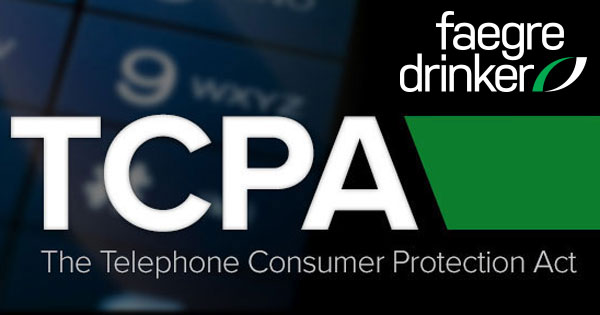In a recent decision by the Southern District of California, summary judgment was entered in favor of a second-hand fashion retailer, Poshmark, in a putative class action. The court concluded that the user of the app, not Poshmark, had “made the calls” that invited the plaintiff to use the mobile app. See Reichman v. Poshmark, Inc., No. 16-2359, 2017 U.S. Dist. LEXIS 73769, at *11 (S.D. Cal. May 15, 2017).
Poshmark is a “social commerce marketplace for fashion” whose mobile app allows users to browse, buy, and sell clothing and accessories. More specifically, registered Poshmark users can use the app to create an online “closet” that lists and shows images of the goods they wish to sell. The app also allows registered users to purchase goods from other Poshmark users’ closets on their mobile devices. Like many other apps, Poshmark’s app allows users to invite their personal and social media contacts to join Poshmark via text or other means of communication.
The lawsuit arose from two separate text messages that were allegedly sent to the plaintiff by a third-party user of the Poshmark app (the “User”). In early 2015, the User accessed the app and listed several items for sale. She then navigated to the app’s “Find People” page, which provided users with three options to find their contacts: (1) from personal contacts in the mobile device; (2) from a Facebook account; and (3) from a Twitter account. The User elected to have the app find contacts stored on her mobile device. The app then displayed a list of the User’s contacts—including people who were not yet Poshmark users—with their phone number and/or email address. The User then had two options to invite her contacts to join Poshmark: she could either select the “Invite All” button to invite everyone in her contact list or she could individually select each contact she wished to invite. The User selected the first option.
The plaintiff, whose phone number was saved in the User’s contact list, received a text message containing an invitation “to view and buy the wares now being sold through POSHMARK” along with a link to the User’s “closet.” Id. at *3. The plaintiff received a second text message in early 2015 after the User repeated the same invitation process a second time. The plaintiff eventually filed suit and alleged that Poshmark had violated the TCPA by sending the text messages without her consent.
Poshmark moved for summary judgment on the grounds that it did not “make” the invitational text messages. Id. at *4. While the TCPA makes it unlawful “to make any call” to a cell phone without prior express consent using an automatic telephone dialing system, and the FCC has said that text messages are “calls” for purposes of the statute, the TCPA does not define the phrase “to make any call.” Id. at *5. Accordingly, courts have looked to the FCC for guidance on this issue, specifically its July 2015 Declaratory Ruling. See In the Matter of Rules & Regulations Implementing the Tel. Consumer Prot. Act of 1991, 30 FCC Rcd. 7961, 7978-84 (2015) (the “July 2015 Order”). The FCC’s July 2015 Order addressed a number of petitions, including two petitions that had asked the FCC to declare that the petitioners’ apps—which allowed user to make affirmative choices regarding who received invitational text messages and how the recipient was contacted—did not initiate the text messages and that the mobile app users, not the providers, were the callers under the TCPA.
Applying the FCC’s reasoning from the July 2015 Order, the Court agreed with Poshmark that it did not “make any calls.” The Court noted that the record demonstrated Poshmark required users “to take affirmative steps to determine whether to invite a contract, to whom to send an invitational message, and when that invitational message is sent.” Reichman, 2017 U.S. Dist. LEXIS 73769, at *8. It also found that, in this case, it was clear that the User had caused the text messages to be sent to the plaintiff by: “(1) granting the app permission to access her contact list, (2) tapping on the ‘Find People’ button, (3) choosing the ‘Find friends from your contacts’ option, (4) determining whether to invite all her contacts or select contacts, and (5) choosing to send the invitational message by selecting the ‘Invite All’ button.” Id. Based on these affirmative steps, the Court held it was clear that the User, and not Poshmark, had taken the action necessary to send the text messages. Id. at *8-9. In so holding, the Court rejected the plaintiff’s argument that there was a genuine issue of material fact regarding whether Poshmark had adequately informed its users of the method by which invitations would be sent. The Court found that the app made it clear to Poshmark users whether an invitation would be sent via text or e-mail and noted that, in any event, whether the defendant informed its users regarding the method of invitation was not material to determining who “makes” a call under the TCPA. Id. at *9.
As we have previously covered, courts continue to interpret the July 2015 Order and further clarify when the users of a mobile app, and not the app provider, will be deemed to have initiated calls or texts under the TCPA. Like these prior decisions, Reichman provides critical guidance to mobile app designers and providers who include invitational text messaging in their platforms. These decisions suggest that app providers would be well-advised to use features that ensure that users control who receives invitational text messages and when such texts are sent.

